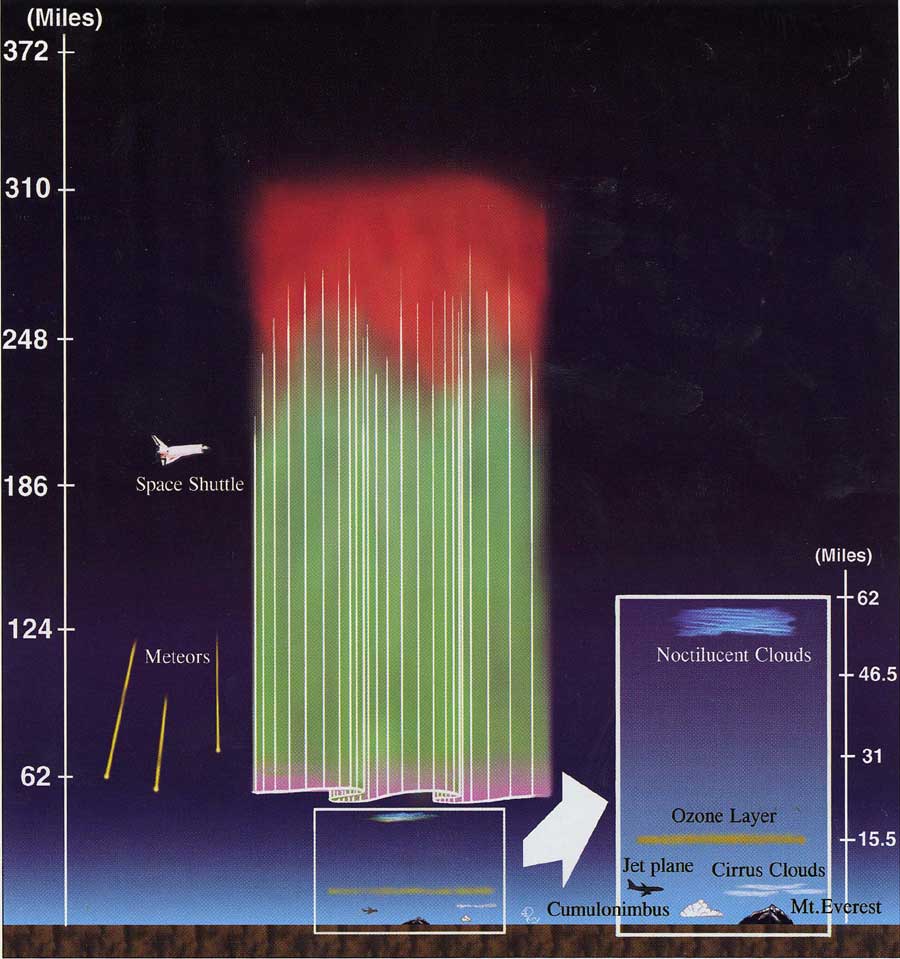Auroral Activity
The aurora is curtain-like in structure. As it becomes more active, it ripples much like that of a flag in the wind. When the auroral curtain is quiet, it appears in the sky as a uniform band. This uniformed band is called a homogeneous arc. As it becomes slightly active, the band begins to develop vertical stresses or rays. Scientists call this type of activity a rayed arc. As the aurora becomes more active, the rays become larger, and begin to fold over (much like an ocean wave).
The auroral curtain is brightest at its bottom, and becomes more dim toward its top. For this reason, a quiet band of the aurora is uniform in brightness. As the aurora becomes more and more active, the folded portions of the curtain seem brighter than the rest.
 The
aurora is more easily viewed on cold nights rather than warm nights.
The reason for this is due to the fact that the aurora is located well
above the earth. In fact, the bottom most point of the auroral curtain
is approximately 60 miles above the earth's surface. Weather patterns
and clouds are located much lower (approximately 8 miles above the earth's
surface). Thus, on warmer (or more cloudy) nights, The aurora is hard
to view.
The
aurora is more easily viewed on cold nights rather than warm nights.
The reason for this is due to the fact that the aurora is located well
above the earth. In fact, the bottom most point of the auroral curtain
is approximately 60 miles above the earth's surface. Weather patterns
and clouds are located much lower (approximately 8 miles above the earth's
surface). Thus, on warmer (or more cloudy) nights, The aurora is hard
to view.